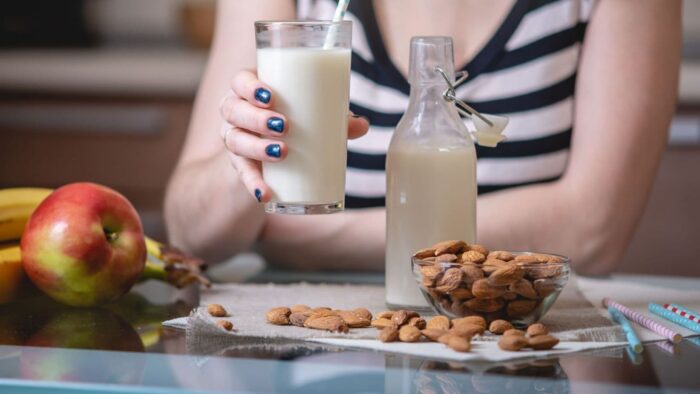With dairy milk falling out of favor, baristas increasingly rely on plant-based alternatives like almond and coconut milk for specialty coffee drinks. However, the chemistry of these nut and plant derivatives reacts far differently than cow’s milk when steamed and frothed, often curdling into grainy clumps or deflated blobs. So how does almond milk curdle and how can baristas troubleshoot the issue? Read on for ways to win the plant milk battle! In this post we talk about Troubleshooting Almond Milk Curdling.
Why Almond Milk Foam Curdles
Unlike the protein and sugar structures in dairy, almond milk lacks stabilizing substances to hold bubbles intact when incorporating heavy air through steaming. Without compounds to encase air pockets suspended within a smoothed out emulsion, the stretched walls of plant cells soon rupture. Deflated plant matter then coagulates into those unattractive curds peppered through your foam.
Additionally, high heat further destabilizes plant proteins vulnerable to denaturing at lower temperatures than what dairy can withstand. So simultaneously subjecting almond milk to hot steam that alters its protein shapes while aggressively incorporating air through turbulent injection of steam proves a fast recipe for curdling catastrophe!
How To Keep Almond Foam From Curdling
Thankfully a few easy tweaks prevent almond milk foam failures:
1. Start Creamy – Choose barista-style almond milk with addedprotein isolates and stabilizers that structurally fortify bubbles better. Avoid thin, watery varieties.
2. Lower Steam Wand Heat – Keep the tip submerged deeper in the milk rather than vigorously injecting air to gently stretch proteins without excessive heat shocking plant matter.
3. Groom the Milk – Pour smoothly between two pitchers after steaming to forcibly re-join already stretched proteins and reincorporate bubbles for smoother emulsion before pouring.
4. Finish Cold – Briefly submerge the pitcher’s metalbase in ice water to rapidly halt heating that continues cooking foam and destabilizing things further.
5. Pour Promptly – Spoon or scoop foam immediately before liquid base separates again if curdling continues. Quick drinking reduces noticeable curds!
Following an informed plant milk steaming protocol minimizes curdling even with tricky almond milk. But in case you still spot those telltale blobs…
Troubleshooting Persistent Curdled Foam
If you just can’t seem to stop the curds, try:
1. Stabilize – Add a pinch of xanthan gum or guar gum powder often used in gluten free baking to strengthen bubble walls the same way gluten stretches bread dough.
2. Dilute – Mix a splash of oat or soy milk that inherently froths more easily into almond milk to create a smoothed emulsion less prone to separating.
3. Mask With Flavor – Hide curd chunks in heavily spiced or sweet drinks where ginger, cinnamon, molasses, chocolate or other assertive flavors distract from textural imperfections.
Some trial and error lies ahead when swapping traditional dairy for plants. But simple adaptations curb most milk miscues. Soon that creamy crown of beautifully frothed almond foam floating artfully atop your favorite espresso drink won’t betray a hint of curds to come! I hope this Troubleshooting Almond Milk Curdling post helps you.

